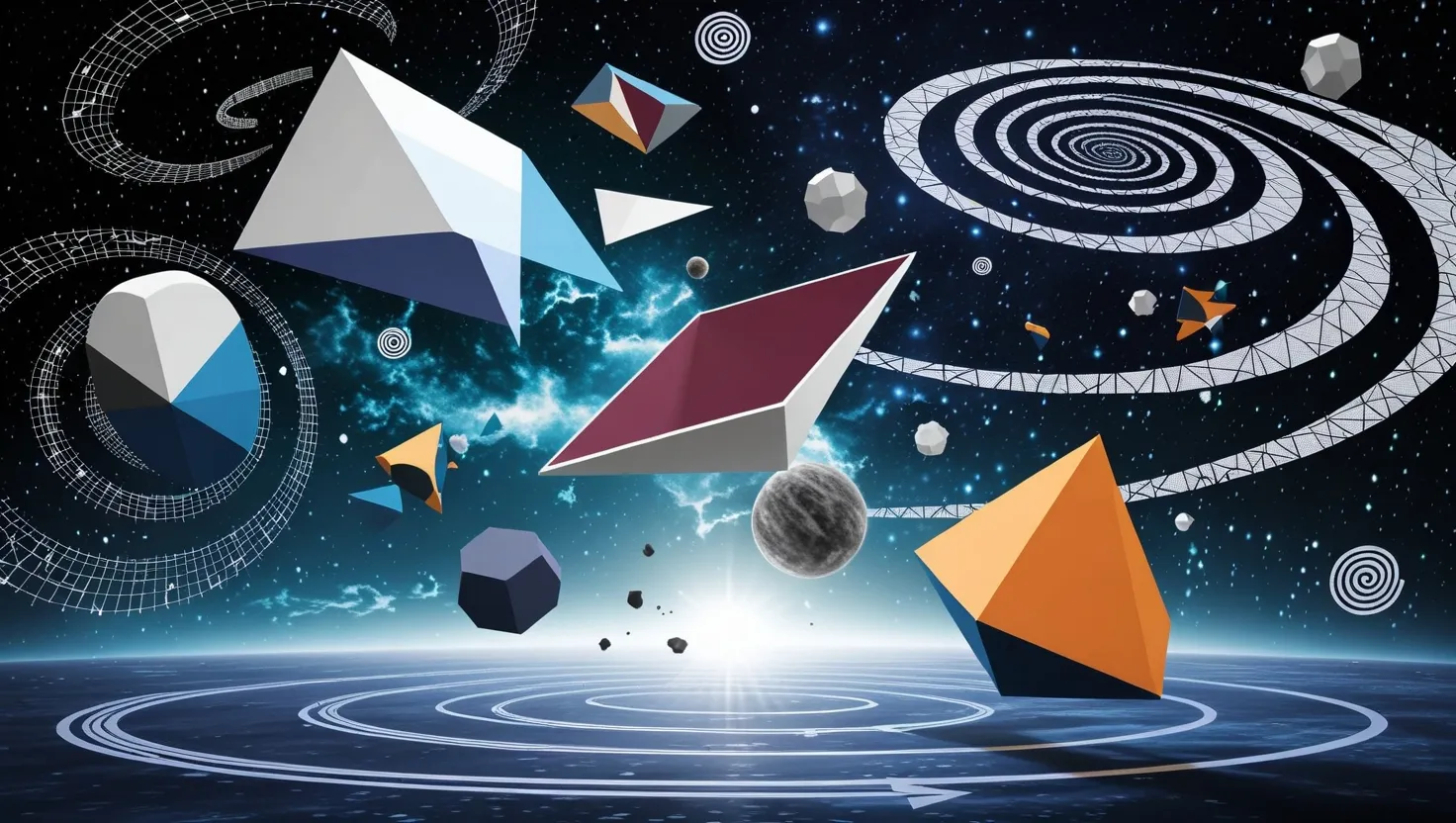7 Extraordinary Mathematical Paradoxes That Challenge Logic
Mathematics has long been considered the language of certainty—a realm where clear rules lead to definitive answers. Yet hidden within this structured world are paradoxes that defy our intuition and challenge our understanding of reality itself. These mathematical oddities aren’t simply academic curiosities; they reveal fundamental truths about the limits of our knowledge and the nature of the universe.
Have you ever wondered if your most basic assumptions about reality might be wrong? Let’s explore seven remarkable mathematical paradoxes that might force you to reconsider what you think you know.
The Banach-Tarski paradox stands as perhaps the most astonishing mathematical result that directly contradicts our physical intuition. This theorem proves that a solid ball in three-dimensional space can be decomposed into a finite number of pieces and then reassembled to form two identical copies of the original ball. Yes, you read that correctly—one ball becomes two, with no new material added. The decomposition involves breaking the ball into as few as five distinct pieces, which are then rearranged through rotations and translations to create two perfect replicas of the original sphere.
“Mathematics is the art of giving the same name to different things.” - Henri Poincaré
The paradox is often described informally as the ability to turn “a pea into the Sun” through mathematical manipulation. What makes this result so perplexing is that it seems to violate conservation of volume—a fundamental principle of physics. How can we double an object without adding anything? The resolution lies in the nature of the pieces themselves. These aren’t ordinary physical pieces but rather “non-measurable” sets—infinite collections of points that cannot be assigned a meaningful volume. The existence of such sets depends on the axiom of choice, a foundational principle in set theory that allows mathematicians to make infinitely many arbitrary selections.
I often wonder: if mathematics allows such counterintuitive results, what other aspects of reality might be fundamentally different from how we perceive them?
Gödel’s Incompleteness Theorems represent another profound challenge to our understanding of mathematical truth. Kurt Gödel shocked the mathematical world in 1931 by proving that in any consistent mathematical system complex enough to include basic arithmetic, there will always exist true statements that cannot be proven within that system. This discovery demolished the hope of creating a complete, consistent mathematical framework that could prove all true statements.
The implications are staggering. Mathematics, the most precise language humans have developed, contains inherent limitations. No matter how sophisticated our mathematical systems become, there will always be truths that lie beyond their reach. This fundamental incompleteness extends beyond mathematics into philosophy, logic, and even computer science, where it relates to the limits of what computers can solve.
“The more I think about language, the more it amazes me that people ever understand each other.” - Kurt Gödel
The Monty Hall Problem presents a probability puzzle that has confounded countless people, including professional mathematicians. Imagine you’re on a game show with three doors. Behind one door is a car; behind the others are goats. You choose Door 1. The host, who knows what’s behind each door, opens Door 3 to reveal a goat. Should you stick with Door 1 or switch to Door 2?
Intuitively, most people assume it makes no difference—surely there’s now a 50/50 chance between the remaining doors. However, probability theory reveals that switching doors actually gives you a 2/3 chance of winning, while staying with your original choice gives you only a 1/3 chance. This counterintuitive result has been verified through countless simulations and mathematical proofs, yet it continues to challenge our intuitive understanding of probability.
What other probabilities in our daily lives might we be dramatically misinterpreting?
Gabriel’s Horn presents us with a fascinating geometric paradox. This three-dimensional shape is formed by rotating the curve y = 1/x (where x ≥ 1) around the x-axis. Remarkably, this shape has a finite volume but an infinite surface area. Physically interpreted, this means you could fill Gabriel’s Horn with a finite amount of paint, but you could never completely paint its surface.
“Mathematics is not about numbers, equations, computations, or algorithms: it is about understanding.” - William Paul Thurston
This paradox challenges our intuition about the relationship between volume and surface area. How can a container hold a finite amount of substance while having an infinite boundary? The answer lies in the nature of infinity and the behavior of certain mathematical series. The volume converges to a finite value (π), while the surface area calculation diverges to infinity.
The Birthday Paradox illustrates how our intuition about probability can be dramatically wrong. What’s the minimum number of people needed in a room for there to be a 50% chance that at least two share the same birthday? Most people guess around 183 (half of 365), but the actual answer is just 23 people. With 70 people, the probability exceeds 99.9%.
This result seems impossible at first glance. How can such a small group create such a high probability? The key insight is that we’re not asking about matches with a specific birthday, but matches between any two people in the group. The number of potential pairs increases much faster than the number of people, following what mathematicians call a “combinatorial explosion.”
I find this paradox particularly relevant in our data-driven world. How many other statistical patterns might be hiding in plain sight, waiting to surprise us with their unexpected behaviors?
Simpson’s Paradox shows how statistical trends can completely reverse when data is grouped differently. Imagine a medical study comparing two treatments. Treatment A might show better results than Treatment B when looking at men and women separately, yet Treatment B could appear superior when all patients are analyzed together. This seemingly impossible contradiction is not only mathematically valid but occurs regularly in real-world data analysis.
“Statistics are like bikinis. What they reveal is suggestive, but what they conceal is vital.” - Aaron Levenstein
This paradox forces us to question how we interpret data and draw conclusions. The trends we observe may depend entirely on how we choose to categorize information. When analyzing any dataset, we must consider multiple perspectives before drawing conclusions.
Have you ever considered how your perspective might be completely changing the patterns you observe in the world around you?
The Coastline Paradox demonstrates that the measured length of a coastline depends on the scale of measurement. As you use progressively shorter measuring tools, the measured length continues to increase without bound. This happens because coastlines contain ever-smaller irregularities that are captured by finer measurements.
This paradox led to the development of fractal geometry, which studies shapes with fractional dimensions. A coastline isn’t truly one-dimensional like a straight line, nor is it two-dimensional like a plane. Instead, it exists in a fractional dimension between these values, reflecting its complex, self-similar structure across different scales.
The coastline paradox reminds us that measurement itself is relative. The answer to “how long is this coastline?” must always be accompanied by “at what scale of measurement?” This concept extends far beyond geography into how we measure and understand complex systems throughout science.
“The essence of mathematics is not to make simple things complicated, but to make complicated things simple.” - S. Gudder
These seven paradoxes represent just a small sample of the counterintuitive results that mathematics has revealed. They challenge our assumptions about volume, truth, probability, infinity, statistics, and measurement. They show us that even in mathematics—our most precise and rigorous system of knowledge—surprising and contradictory-seeming results can emerge from sound reasoning.
The value of these paradoxes extends far beyond their mathematical curiosity. They teach us to question our assumptions, to recognize the limitations of intuition, and to appreciate the profound complexity hidden within seemingly simple questions. They remind us that the universe operates according to principles that may be fundamentally different from our everyday perceptions.
What other aspects of reality might be radically different from how we perceive them? What other truths might we discover if we continue to push the boundaries of mathematical thought?
As we navigate an increasingly complex world, the lessons of these mathematical paradoxes become ever more relevant. They teach us intellectual humility—the recognition that our intuitions can be dramatically wrong, even in domains where we expect clarity and certainty. They encourage us to remain open to surprising possibilities and to approach problems from multiple perspectives.
The next time you feel certain about something, remember the Banach-Tarski paradox and consider: might there be an entirely different way of looking at this problem that completely changes the answer?






